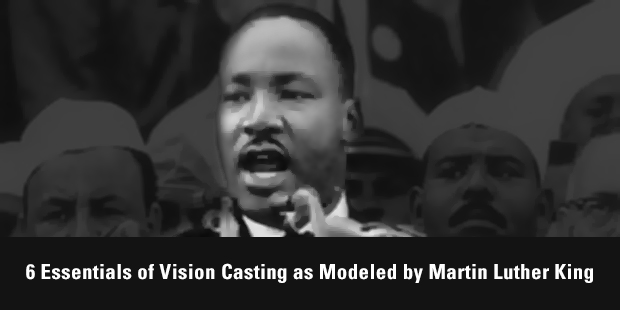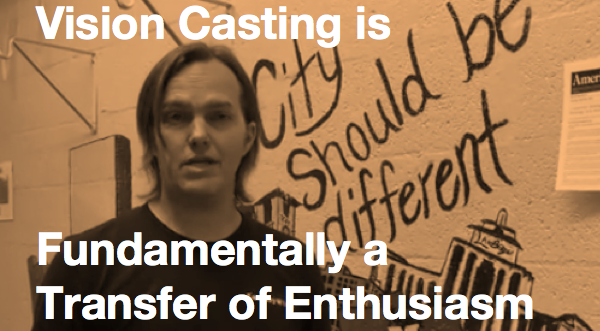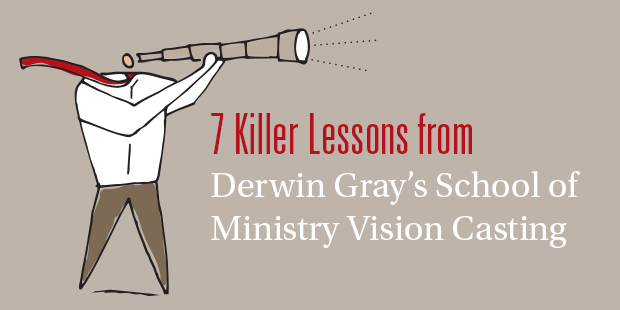One of the most common questions I hear from church leaders is “How long will it take my church to change?”
It’s such a great question because change sometimes feels, well, impossible.
- You hear a constant stream of complaints
- You’ve run into too many people who like things the way they are now (or the way they were a long time ago)
- You’ve got too many friends who got hurt badly trying to lead change
- The committees keep meeting and they keep stalling
- You’re starting to feel like Moses in the desert with no Promised Land in sight
I get that, I’ve been there.
But don’t get discouraged. Change—even radical change—is possible.
A Change From Dying Slowly to Growing Rapidly
I’ve led change in a local church for 18 years with the many of the same core group of people I started with when I was a seminary grad.
18 years ago, I began ministry with three small mainline churches whose total average attendance was less than 50. They churches were about as traditional as churches get: century old buildings, organs, choirs, committees, few kids and zero growth.
Within 5 years we had sold all three buildings and merged the three churches into a new church with a new name and a new mission. In the process, we changed the structure of leadership, engineered a radical overhaul of the style of worship, moved to an elementary school and launched a building campaign. In the process, we grew to over 10 times our original size.
Then almost 6 years ago, a core of us left the denomination we were a part of. We left a nearly paid for building to start again in neighbouring communities as Connexus, launching two locations at once. We moved from a permanent building to rented facilities and planted as a North Point Strategic Partner. Now, we’re able to reach more people than ever before, and 60% of the people who walk in our door come from an unchurched background. This has helped us realize our vision to be a church that unchurched people love to attend.
I realize, that’s a lot of change. Have we lost people? Of course.
But we have reached many more. And many didn’t leave. Some have been with us through the entire 18 year journey.
I share those things not to boast—God receives the credit—but to let you know that change is possible. Radical change is possible.
It Even Happens in Vegas
Your church doesn’t have to be stalled or dying to experience the benefits of change.
One of the best examples of this is how Jud Whilite took over the senior pastor role at Central Christian Church in Las Vegas after Gene Appel had led it from 400 to over 8000 in attendance. If you follow church world at all, those transitions don’t always go well (that’s an understatement). How do you build on that? Under Jud’s leadership, Central has become a distinctly different church and grown even more.
It changed. And reached more people.
Change won’t make peace with the status quo. Change bridges the gap between what is and what could be.
Three Prerequisites for Change
Before you start engineering change, there are at least three prerequisites:
1. A clear and compelling vision, mission and strategy. Most people have a vision and mission, but few have a strategy. Mission answers the question of what we’re called to do. Vision answers why we’re called to do it. But strategy is about how we will accomplish it. Strategy is often the difference between success and failure. And please, understand, I’m talking about embarking on good change here—godly, biblical, wise and courageous change that will result in a mission being accomplished. Not some whim of a dictator like leader.
2. A team committed to bringing about the change. You can’t do this alone. You need at least a handful of people committed to the change. People who will pray with you and help broker the change. You can usually find them. You just have to look.
3. A deep resolve. Are people go to enthusiastically embrace even good change? Many will not, but most will—if you know how to lead them. Leading Change Without Losing It is a guide to help leaders navigate the nerve-wracking opposition that comes with change.
A Reasonable Time Frame for Change
So how fast can you change? While times will vary, here’s what I believe is a reasonable timeframe for change based on an organization that is currently not on a path way to change:
12-18 Month Prep Period. Again, assuming you are going to bring up change in a change resistant culture, it might take you 12-18 months to get the prerequisites outlined above in place. If you have a change-friendly context, you might be able to do this in 3-6 months. Either way, you’ll need to cast vision for change, create a vision, mission and strategy that will lead your church forward and share it all enough that is owned by at least a small group of people other than yourself (in our church of 50, we had maybe a dozen truly onboard to start). One thing you can start changing in this window is your attitude. You can preach better, bring hope to meetings and inspire people. Attitude is something always in your control.
The goal of this prep period is to cast as clear and compelling picture as you can of who you are going to be and what you’re going to look like 5 years from now.
Then break the change down into short term (One year), medium term (2-3 years) and long term (3-5 year) goals.
Year 1. Year one is the time to get some quick wins under your belt. Move to a better curriculum. Preach better series. Introduce some new music. Change your meeting structure or frequency. Paint something. Pick some changes that are easy to make and will result in a better experience now. Remember, these are clear steps that are going to help you get to your five year goal, not just random and unstrategic changes.
2-3 Years. Choose some structural changes you want to make. We reformed our governance structure, made initial plans to sell our historic buildings, started introducing new musicians and a band (as we moved away from traditional music), introduced some new spiritual growth initiatives and moved our kids ministry to where we wanted it to be. You need to start laying the structural support system for change now or by the time you get to year 5, your change won’t be sustainable.
4-5 Years. Make your final changes. For us, it meant that our transformation is Sunday service style, governance, structure and more was complete. The last 10% is always the hardest, so don’t quit. Don’t overestimate what you can accomplish in 1 year, but don’t underestimate what you can accomplish in 5.
5+ Years. Keep changing. You’re never done. And now you’ve got new issues to solve and anticipate that didn’t exist when you started. So keep going.
A Final Word on Change v. Transformation
You can create a lot of change in 5 years. But when does transformation happen?
I believe transformation happens when
>The changes you make become embedded in the organizational culture. What was new has become normal. People assume it’s just going to be this way. And what was novel is now a foundation for all future decisions. The change has become a part of your organizational culture.
>Most people no longer want to go back; they want to move forward. I say most people, because you’ll always have the dissenters. But most people want to move forward. They’re excited. Their vision has moved from being about the past to now embracing the present and future. The best is yet to come, and you can feel it.
So exactly when does transformation happen?
I believe transformation happens somewhere between Year 5 and Year 7.
Once you’ve made the change, have demonstrated that you’re not turning back, and you’ve begun to see some of the benefits of change (you’re healthier and likely growing), then the shift in values and culture happens —almost silently. You know it’s a new day when people can’t imagine going back to the way they once were.
And that is an incredible reward for those who navigate change. Not to mention to the people who will benefit from your renewed mission.
What have you learned about change? What stumbling blocks or change-accelerants have you discovered?
Read more from Carey here.

Tags: Carey Nieuwhof, Change, Transformation, Vision, Vision casting
|
What is MyVisionRoom? > | Back to Vision >

































